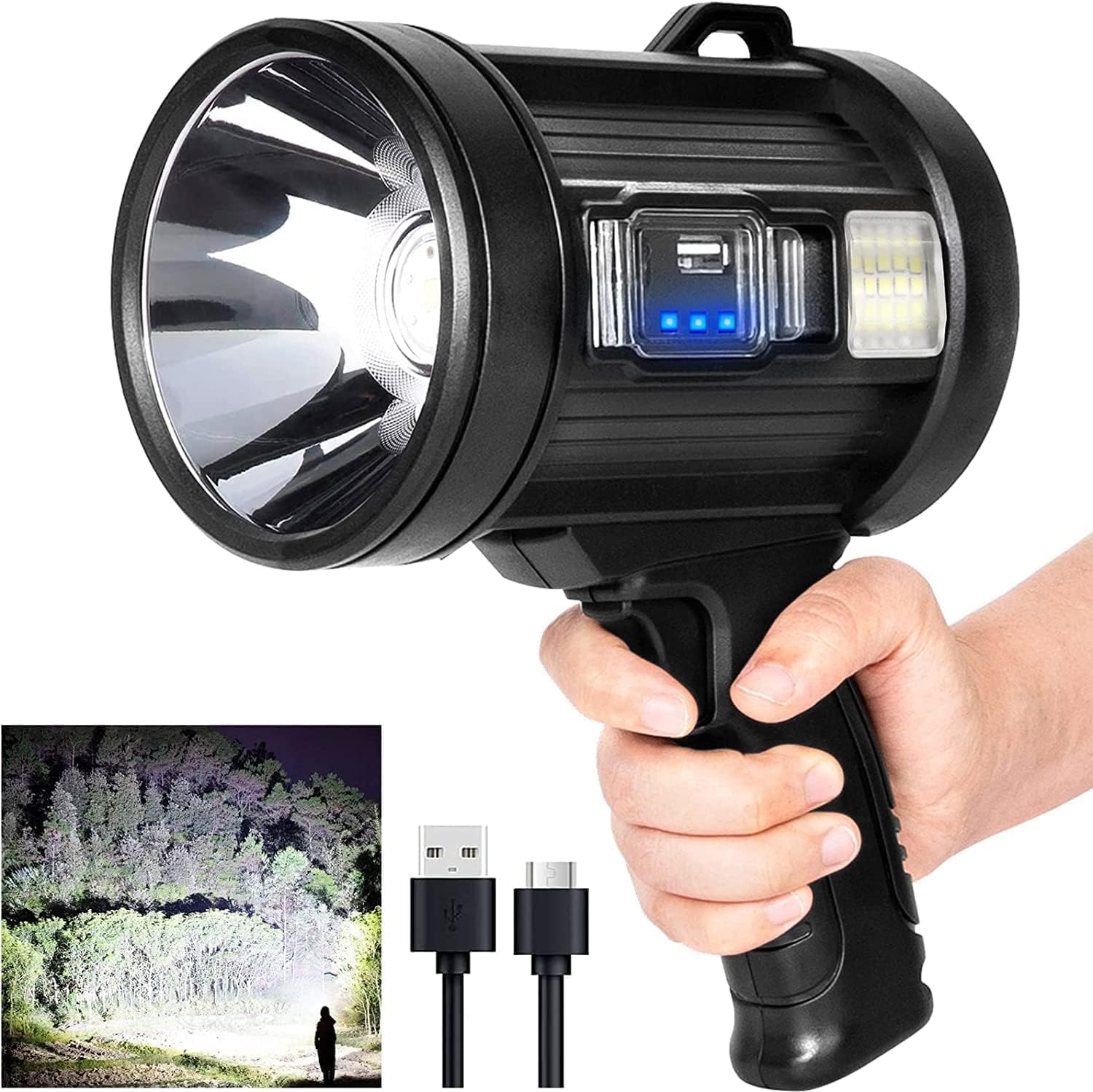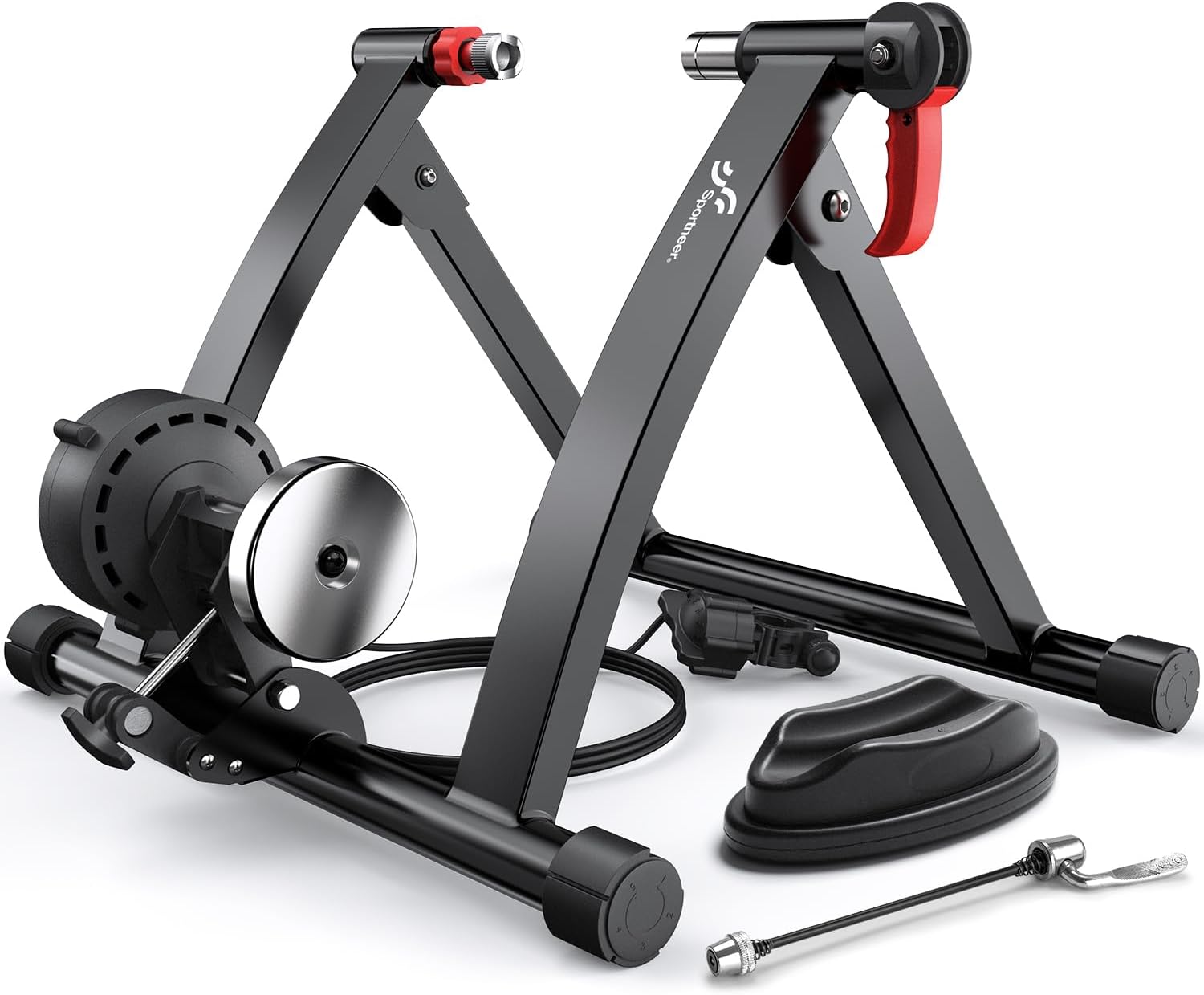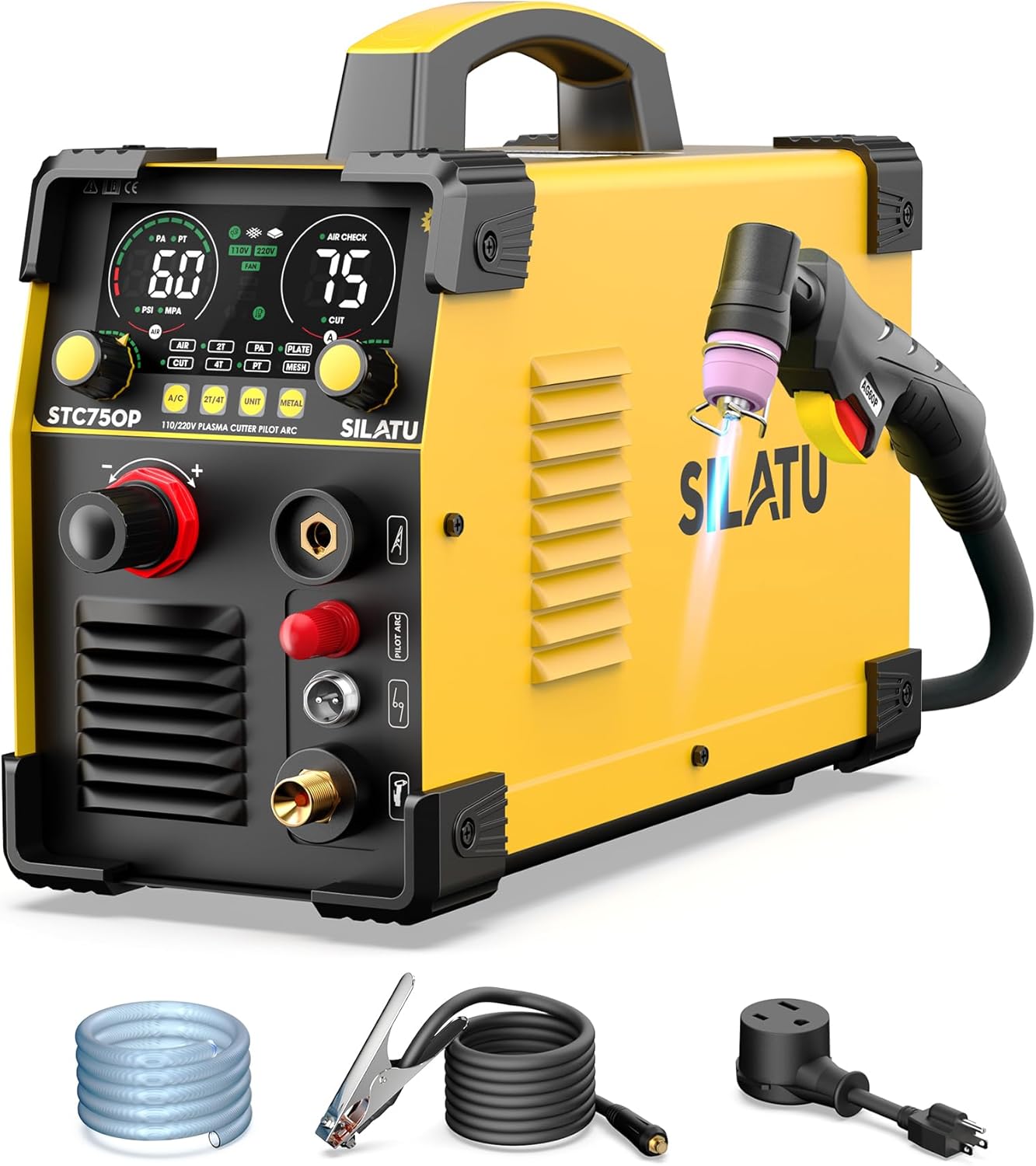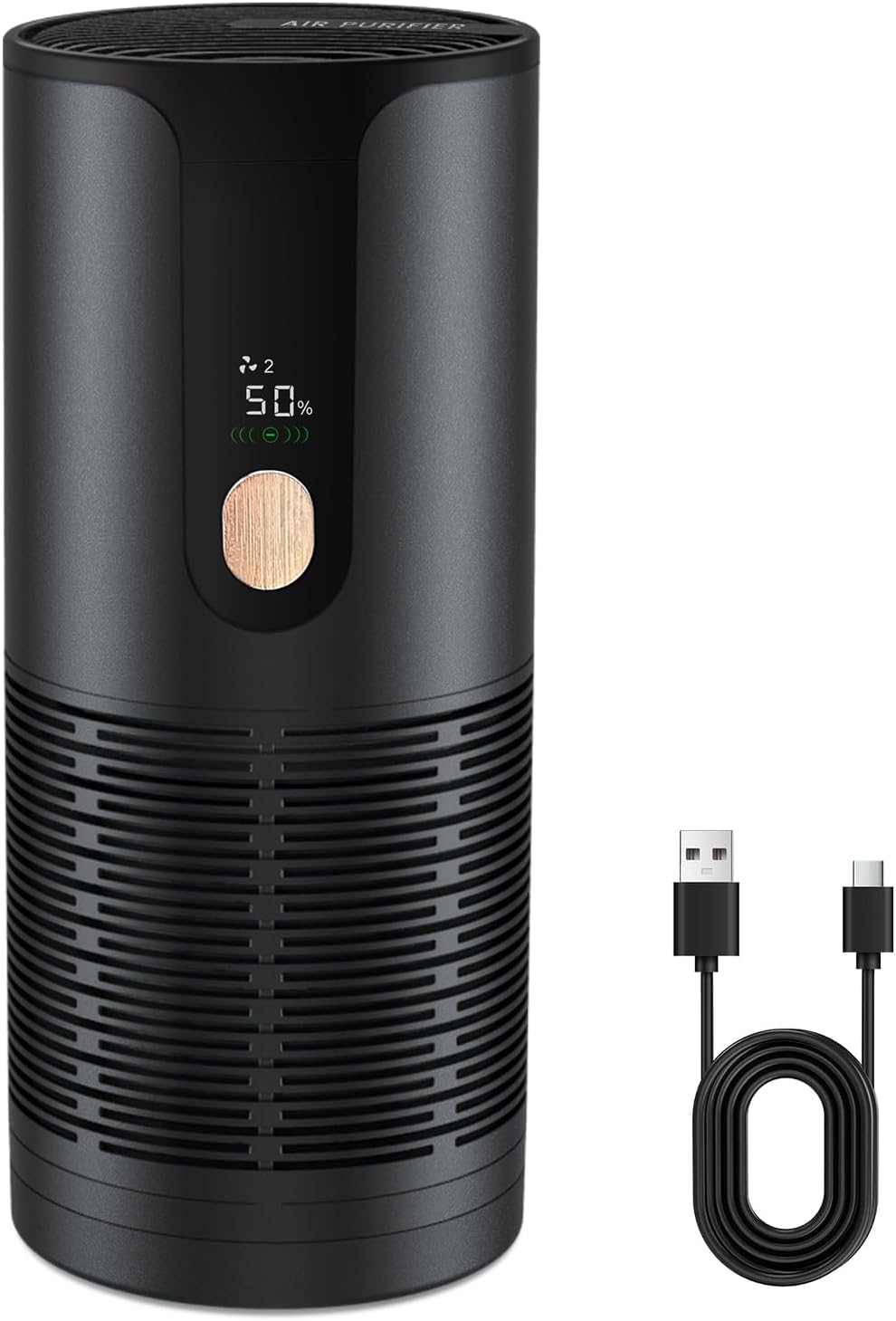Searching for the Best Spotlight Flashlight that delivers powerful illumination for outdoor adventures, emergency preparedness, and nighttime activities has become essential for hunters, boaters, and security professionals. Modern spotlight flashlights combine high-lumen LED technology with rechargeable batteries, providing exceptional brightness reaching hundreds of meters without the bulk and expense of traditional spotlights. Frustrated with weak beams that barely penetrate darkness, short battery life requiring constant replacement, or fragile construction that fails during demanding outdoor use? Premium spotlight flashlights deliver long-range illumination, multiple lighting modes, and waterproof durability that transforms nighttime visibility for search, rescue, and recreational applications. Ready to discover exceptional spotlight flashlights that combine powerful beam distance with practical features for reliable illumination? Let’s explore these outstanding lighting solutions that provide professional-quality brightness with the versatility and durability every outdoor situation demands.
5. Befamali W5225

Exceptional brightness stems from updated P90 chip generating impressive light output that illuminates over 5,000 feet or 1,500 meters through deep darkness and fog. The substantial beam distance proves invaluable for hunting, hiking, fishing, and night work requiring long-range visibility. Extended battery life supports demanding applications requiring sustained illumination across extended periods.
Advanced charging technology features USB-C port enabling faster charging than traditional micro ports, achieving full charge within 3-4 hours. The robust USB-C connection proves less prone to wear and damage compared to older port designs. Built-in USB output port transforms the spotlight into portable power bank capable of charging phones and other devices during outdoor activities. Intelligent overcharge and over-discharge protection ensures safe, stable operation when functioning as mobile power source for smart devices.
Comprehensive lighting options include seven modes spanning main light high, medium, strobe, and SOS, plus side light high, medium, and safety warning configurations. Four light colors—white, red, yellow, and blue—adapt to various applications through interchangeable front lenses. Independent main light and side light buttons eliminate cycling through unwanted modes, streamlining operation during time-sensitive situations.
Substantial 10,000mAh rechargeable battery provides up to 24 hours of outdoor lighting time with recharge capability exceeding 1,500 cycles for long-term reliability. Four blue LED indicators display charging status at 25%, 50%, 75%, and 100% levels for accurate power monitoring. IPX7 waterproof rating ensures long-lasting durability during rainy conditions, while rugged impact-resistant ABS material construction protects against drops and bumps during demanding outdoor and indoor applications.
4. Sigoobal W5113

Large capacity design delivers extended runtime with adjustable four-color light options plus USB output and input functionality. Innovative solar charging capability supplements traditional power source charging, providing backup power generation during extended outdoor activities. IPX5 waterproof rating makes it suitable for boating, hunting, and other outdoor pursuits where weather exposure occurs regularly.
Versatile charging methods include connection to standard power sources for rapid charging or solar energy collection solving outdoor power shortage challenges. While power source connection charges faster, solar capability provides convenient energy replenishment when electrical outlets remain unavailable. Multiple charging options ensure operational capability across diverse scenarios and locations.
Comprehensive lighting customization features four colors through interchangeable red, yellow, and blue lenses, with white light serving as default. Adjustable brightness levels adapt output intensity to specific needs, while red-blue side lights provide additional visibility options. The lens system enables quick color changes matching different applications without complex procedures or separate light sources.
Dual USB functionality incorporates input and output capabilities with USB-C charging port delivering faster charging than traditional micro USB connections. Power bank functionality supplies electricity to small electronic devices during emergencies or extended trips. IPX5 waterproof construction enables normal operation in humid environments, while included shoulder straps facilitate convenient carrying during hiking, boating, hunting, and similar outdoor activities requiring hands-free transport.
3. Wenfeng MX-6009C

Ultra-bright LED spotlight paired with side flood light delivers stunning high-lumen beam with four operational modes—high, medium, low, and flash—accommodating diverse scenarios. The side floodlight provides wide-angle, shadow-free illumination perfect for reading, working, or lighting large areas. This dual-light configuration creates versatile tool addressing varied lighting requirements without carrying multiple devices.
Thoughtful safety feature includes internal handle lock preventing accidental power switch activation during work. When toggled down, the lock secures the power switch preventing inadvertent shutoff during critical operations. Upward toggle position releases the lock enabling normal on-off cycling. This mechanism proves valuable during activities where accidental button presses could compromise safety or effectiveness.
Rugged construction withstands tough outdoor conditions through waterproof and impact-resistant design. Durable ABS housing combined with silicone protective case survives drops and bumps, ensuring reliable performance across challenging environments. The robust protection maintains functionality despite physical stresses common during outdoor recreation and professional applications.
Power bank functionality enables device charging during emergencies through integrated output port, maintaining connectivity in remote areas. Battery indicator displays remaining power levels enabling proactive recharge planning. Long battery life provides up to 20 hours on low settings and 5 hours on high, while advanced USB-C technology achieves full recharge within 4.5 hours. Universal USB charging port compatibility ensures convenient power restoration anywhere. Additional features include adjustable stand for hands-free operation, removable red filter for hunting applications, and durable belt clip for easy access. Large comfortable handle enhances usability during hunting, camping, boating, and emergency situations.
2. Mixilin W-5113

Advanced P90 chip technology generates substantial light output with irradiation distance reaching approximately 6,000 feet or 2,000 meters. Six lighting modes include front light high, medium, and strobe settings, plus side floodlight with high, low, and safety warning configurations addressing different lighting requirements. This comprehensive mode selection adapts to varied scenarios from focused long-distance illumination to broad area coverage.
Flexible power replenishment incorporates built-in 9,600mAh high-capacity rechargeable battery eliminating ongoing battery purchase expenses. Dual charging methods include USB cable connection achieving full charge in 4-5 hours or solar power collection requiring 10-20 hours. The solar capability provides valuable backup charging during extended outdoor excursions where electrical power remains unavailable.
IPX5 waterproof rating protects against splashing water from all angles, enabling use in outdoor environments and adverse weather conditions. Premium aluminum alloy and ABS material construction delivers skid-proof, explosion-proof, and shockproof characteristics. Large comfortable handle enhances usability during hunting, boating, camping, dog walking, cave exploring, searching, emergency response, and home applications.
Versatile color options feature white, blue, red, and yellow light modes, each offering high, medium, and strobe settings. Easy color switching occurs through corresponding lens application without complex procedures. Power bank functionality charges connected devices during outdoor activities, while three blue indicator lights display battery life status. The comprehensive feature set creates all-in-one lighting solution suitable for diverse applications and environments.
1. Yierblue YBN-2000G

Powerful heavy-duty construction delivers non-fading brightness through super-bright high-lumen LED generating brilliant focused spot beam easily illuminating entire backyards or focusing on objects up to 1,000 feet distant. Three adaptable settings—high, low, and flash activated through long switch press—accommodate various lighting needs. Dedicated integrated circuit paired with intelligent illumination driver ensures consistent lighting performance every activation, eliminating brightness degradation common in lesser designs.
Exceptional waterproof capabilities include IP67 rating with submersion resistance up to three feet, while floating design enables surface recovery if dropped in water. High-strength ABS housing with silicone protective case ensures maximum durability, with rugged body withstanding drops from 10-foot heights. This comprehensive protection maintains functionality despite harsh conditions encountered during marine activities, severe weather, or rough handling.
Extended runtime stems from built-in rechargeable battery technology providing up to 12 hours on lower settings and 6 hours on higher settings, supporting lighting from dusk till dawn without interruption. Power bank capability charges phones when battery depletion occurs during outdoor activities, maintaining communication capability during emergencies. The substantial capacity eliminates frequent recharging concerns during extended trips or multi-day adventures.
Rapid four-hour charging utilizes advanced USB-C technology enabling quick power restoration between uses. Universal USB charging port compatibility allows recharging at home or in vehicles without specialized equipment. Lightweight construction under one pound facilitates easy carrying without fatigue, while foldable adjustable stand enables hands-free lighting during work or camp setup. Removable red filter adapts spotlight for hunting applications requiring light that doesn’t spook game. This portable spotlight serves as perfect lighting tool for working, camping, boating, hunting, and emergency preparedness applications.
The Ultimate Guide to Spotlight Flashlights: Powerful Illumination for Outdoor and Emergency Applications
Spotlight flashlights have revolutionized long-distance illumination by providing focused, high-intensity beams reaching hundreds or thousands of feet without the weight and power consumption of traditional searchlights. These specialized lighting tools combine powerful LED technology with rechargeable batteries and rugged construction, serving hunters requiring game spotting capability, boaters navigating at night, search and rescue operations, and property security patrols. From recreational outdoor adventures to professional emergency response, quality spotlight flashlights deliver the beam distance and reliability essential for activities requiring exceptional visibility beyond standard flashlight ranges.
Understanding Different Types of Spotlight Flashlights
The spotlight flashlight market encompasses distinct power and feature categories designed for specific illumination requirements and usage intensity. Understanding these differences helps identify the optimal spotlight for intended applications and environmental conditions.
Basic Rechargeable Spotlights
Entry-level rechargeable spotlights featuring 3,000-10,000 lumen outputs with beam distances of 300-800 feet serve basic outdoor recreation, property checking, and occasional emergency use. These straightforward designs typically include 2-4 brightness modes with basic rechargeable battery systems. Construction commonly utilizes durable plastic housings with basic water resistance. Pricing generally ranges from 30-70 dollars for reliable units suitable for casual users and occasional outdoor activities requiring extended visibility.
Mid-Range Multi-Mode Spotlights
Versatile spotlights delivering 10,000-50,000 lumens with 1,000-3,000 foot beam distances incorporate multiple lighting modes, side flood lights, and enhanced power management. Features often include USB-C charging, power bank functionality, adjustable stands, and IPX5-IPX7 waterproof ratings. Battery capacities typically span 5,000-10,000mAh supporting 6-20+ hour runtimes. Investment typically ranges from 50-120 dollars for quality equipment balancing performance, features, and durability for regular outdoor users and semi-professional applications.
Professional High-Output Spotlights
Premium spotlights exceeding 50,000 lumens with beam distances beyond 3,000 feet serve demanding professional applications including search and rescue, marine navigation, wildlife management, and security operations. Advanced features include multiple color options, solar charging capability, extensive runtime, and industrial-grade waterproofing. Robust construction withstands extreme conditions and intensive use. Pricing typically exceeds 100-250+ dollars but provides performance and reliability necessary for professionals depending on equipment in critical situations.
Essential Benefits of Investing in Spotlight Flashlights
Extended Visibility Range
Spotlight flashlights deliver focused beams reaching significantly farther than standard flashlights, enabling visibility of distant objects, terrain features, or potential hazards. This extended range proves essential for navigation, search operations, wildlife observation, and security applications requiring early detection or long-distance identification. The concentrated beam penetrates darkness, fog, and precipitation more effectively than diffuse lighting.
Versatile Application Range
Modern spotlights incorporate multiple lighting modes, colors, and accessories adapting to diverse scenarios from hunting and boating to emergency response and property maintenance. Side flood lights provide area illumination complementing focused beams, while color filters serve specialized applications. Power bank functionality extends utility beyond lighting to include device charging during outdoor activities or emergencies.
Rechargeable Cost Efficiency
Built-in rechargeable batteries eliminate ongoing disposable battery expenses while providing adequate capacity for extended use. Modern lithium battery technology delivers hundreds or thousands of recharge cycles supporting years of service. The rechargeable approach proves environmentally friendly while reducing long-term operational costs compared to disposable battery dependency.
Critical Factors to Consider Before Purchasing
Beam Distance and Lumen Output
Accurately assess typical usage distances to determine adequate beam range. Short-range applications including camping and general outdoor use require 500-1,500 foot beams, while hunting, boating, and search operations benefit from 1,500-3,000+ foot capabilities. Consider that advertised lumen ratings don’t directly correlate to beam distance, as reflector design and LED characteristics significantly influence actual throw. Prioritize beam distance specifications over lumen claims when long-range visibility is primary concern.
Battery Capacity and Runtime
Evaluate typical usage duration against battery capacity and runtime specifications. Extended outdoor activities including overnight hunting or multi-hour patrols require substantial capacity supporting 10-20+ hour operation on lower settings. Consider that highest brightness modes dramatically reduce runtime compared to medium or low settings. Balance brightness needs against duration requirements, recognizing that excessive output beyond actual needs wastes battery capacity.
Waterproof Rating and Durability
Match waterproof specifications to expected environmental conditions. Basic water resistance (IPX4-IPX5) suffices for occasional rain exposure, while serious outdoor use benefits from IPX6-IPX7 ratings providing protection against heavy rain and temporary submersion. Marine applications should prioritize IPX7-IPX8 ratings with floating capability. Evaluate construction materials and impact resistance specifications against typical handling and drop risks.
Weight and Ergonomics
Spotlight weight significantly affects comfort during extended holding or carrying. Units under two pounds enable one-handed operation without excessive fatigue, while heavier models may require frequent hand switching or two-handed support. Consider handle design, grip comfort, and balance for anticipated usage patterns. Evaluate whether included carrying straps, stands, or mounting options enhance practical usability for specific applications.
Maintenance Strategies for Maximum Longevity
Battery Care and Charging Practices
Avoid complete battery depletion before recharging, as partial discharge cycles extend lithium battery lifespan. Store spotlights with 40-60% charge during extended non-use periods preventing degradation from full charge or deep discharge storage. Use manufacturer-supplied chargers or quality USB power sources meeting voltage and current specifications. Monitor charging to prevent overheating, though quality units incorporate protection circuits preventing damage.
Lens and Reflector Maintenance
Clean lenses and reflectors regularly using soft microfiber cloths removing fingerprints, dirt, and moisture affecting beam quality. Avoid abrasive materials or harsh chemicals potentially scratching optical surfaces or damaging coatings. Inspect O-ring seals around lenses for wear, debris, or damage compromising waterproof integrity. Apply silicone grease to O-rings during seal inspections maintaining waterproof effectiveness.
General Spotlight Care
Wipe exterior surfaces regularly removing dirt, salt residue from marine use, and moisture that could promote corrosion. Inspect for cracks, damaged seals, or loose components requiring attention before water exposure. Store in dry locations protected from extreme temperatures and direct sunlight that could degrade plastic components or batteries. Test functionality periodically during storage ensuring operational readiness for unexpected needs.
Making Your Final Decision
Prioritize beam distance matching actual usage requirements rather than pursuing maximum specifications potentially remaining unused. Consider total cost including replacement batteries, charging accessories, and optional features when comparing different models. Evaluate warranty coverage and customer support availability ensuring long-term satisfaction with significant investments.
The ideal spotlight flashlight balances adequate beam distance for intended applications, sufficient battery capacity for typical usage durations, and appropriate durability against budget constraints and portability needs. By understanding the differences between spotlight categories and focusing on specifications matching actual usage patterns, users will find lighting tools delivering reliable long-range visibility across diverse conditions. Whether seeking basic recreational spotlights for occasional outdoor use or professional-grade systems for demanding applications, this investment transforms nighttime visibility while providing essential illumination capability for activities requiring extended range beyond standard flashlight performance.












































